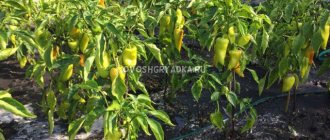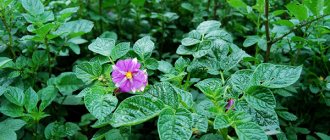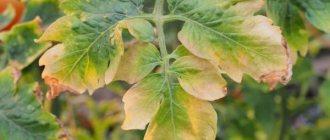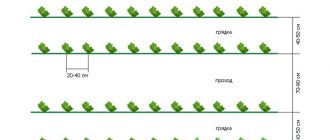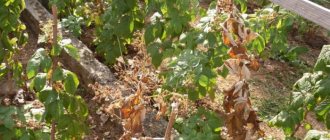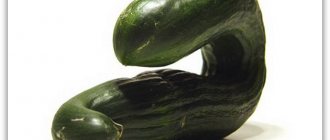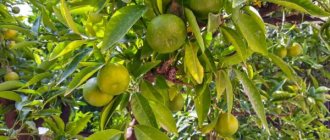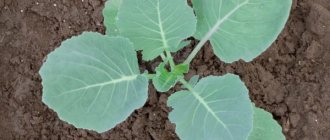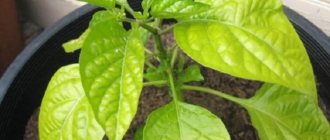In August and September, gardeners harvest tomatoes. However, low temperatures and lack of light and nutrients during growth can delay fruit ripening. Because of this, the question arises: tomatoes do not turn red on the bushes, what should I do?
The thing is that the phytohormone ethylene is responsible for the redness of the fruit. It begins to be produced only after the fruits reach their varietal size. At the same time, under unfavorable conditions (for example, cold weather), plants do not start the ethylene biosynthesis mechanism and tomatoes do not ripen.
In order for the phytohormone to begin to be produced, you can use chemical or mechanical methods to ripen tomatoes in a greenhouse and soil. In this article we will talk about mechanical methods after which plants experience stress and begin to actively produce ethylene. And also what you will learn about folk remedies without chemicals - how to process or water tomatoes so that the fruits turn red faster.
Tomatoes don’t turn red: we understand the reasons
Tomatoes may not turn red for various reasons, including:
- Thickening of plantings, when plants simply do not have enough light and nutrients, as a result, they are not able to provide the fruits with the necessary nutrition for their ripening;
- Shading of plantings with tomatoes, when the plant also does not have enough strength to produce a harvest of ripe tomatoes;
- Fungal diseases and various rots that weaken and inhibit the plant, which is no longer ready to ripen the fruits;
- Insufficient nutrition, which depends on poor soil and lack of regular fertilizing;
- Low temperature. Tomatoes are capable of forming ripe fruits only at temperatures not lower than 15 degrees. At low night temperatures, tomatoes stop growing, the fruits stop filling, as if freezing;
- If the weather is hot when the tomatoes are fruiting, the fruits can burn in the sun, literally baking, they become like boiled. Such tomatoes will no longer turn red.
What to do to make tomatoes in a greenhouse turn red
Now that it is clear why tomatoes in a greenhouse do not gain color, we can turn to ways to speed up ripening. In order for the fruits to turn red faster, the greenhouse must be kept closed.
But in order to maintain an optimal microclimate, the greenhouse structure must be ventilated in the morning for approximately 2 hours. Then the temperature will be maintained correctly, and all excess moisture will disappear over time (after all, condensation will certainly accumulate during the night). If there is such a possibility, then the greenhouse should be ventilated in the evening, also for a couple of hours.
The following points will indicate that the seedlings have thickened:
- Tomatoes take a long time to ripen;
- Do not gain redness;
- Maturation is uneven.
In such a situation, it is important to perform circumcision. This is a fair measure for bushes planted at a distance of approximately 30 cm. The leaves must be cut off completely, or cut off in half. When the tomatoes become light (the so-called milky ripeness), you need to cut off the green mass from the bottom of the bush. You should also stop fertilizing the seedlings after approximately July 15th. These measures will prevent the bushes from growing into the green mass and slowing down ripening.
In order for tomatoes to turn red, a comfortable microclimate must be maintained in the greenhouse.
In order for the crop to ripen on the bush, it is necessary to take some measures to speed up this process. If there are beautiful, but green, bunches of tomatoes hanging on the bushes that do not want to turn into the varietal shade, you can resort to the agrotechnical tricks given below.
Provide access to sunlight to the fruits. It has been proven that with improved lighting, tomatoes ripen much faster. To do this, you need to thin out the dense foliage so that it does not obscure the green tomatoes. The shoots themselves can also be carefully turned towards the sun and fixed. You can organize special supports for the bunches themselves, for example, lay them out on arranged boxes.
Limit watering and feeding the bushes. To do this, it is necessary to slightly disrupt the usual state of the bush. For example, cut a through hole in the stem (at a height of about 10 cm from the ground level) and insert a stick or plate into it, which will push the walls of the stem apart. There is another way - pull the stem up and slightly tear the roots or rotate the stem around its axis. Violations of the root system will limit the flow of food and water to the bush, which will accelerate the ripening of the tomatoes themselves.
Bush pruning. This technique is suitable for the case when the fruits on one plant ripen unevenly and not in the usual sequence. Here it is recommended to trim off all excess shoots, remove too small tomatoes and new late ovaries and trim the tomato branches to the trusses. Since such a procedure may be necessary towards the end of summer, during the period when the pathogens of the most dangerous crop diseases are active, after pruning the bushes will have to be treated with protective drugs.
Use banana peels. This method is very interesting and unusual. Here it is proposed to put a banana peel in a bag and tie it to the brush so that it is inside the bag. After a couple of days, the package needs to be removed. Within 2…3 days after removing the bag with banana peel, the fruits in the bunch will turn red.
Use vodka. It turns out that if you inject green tomatoes with vodka or alcohol, the tomatoes will quickly turn red. To do this, 0.5 ml of the product is injected into each fruit using a syringe. It was noted that such injections do not affect the taste of tomatoes.
To prevent the slow ripening of tomato bunches and the need to use agrotechnical tricks, it is necessary to carry out timely preventive measures aimed at the subsequent acceleration of fruit ripening.
And yet, the main reasons why tomatoes in a greenhouse do not turn red well are climatic conditions and varietal characteristics. You've probably wondered more than once why small tomatoes in a greenhouse turn red, while others, no matter how long they are on the bush, do not color at all? As a rule, uniform ripening and coloring of fruits is most characteristic of hybrid varieties.
Varieties such as Evpator, Orange, Gilgal, and Rose bear fruit abundantly. Plants of the Sprut variety reach a height of 4 m, the yield is 1.5 tons of vegetables per season.
In most cases, tomatoes do not have time to ripen on time due to the lack of favorable conditions for active growth.
How to speed up the ripening of tomatoes
There are several ways to help tomatoes ripen. First of all, you need to be careful about the choice of variety and its purpose. Thus, varieties intended for cultivation in a greenhouse do not need to be placed in open ground; they will not have time to ripen. There is no need to plant late-ripening varieties in the northern regions; they also will not have time to repay the harvest.
Open ground tomatoes such as Otradnye and Betta are perfect for growing in the northern regions.
Large varieties of tomatoes, such as Ox's Heart, Titan and others, take quite a long time to ripen.
If the varieties are selected correctly, but the fruits stubbornly do not want to turn red, use methods such as:
- In cool weather, do not open the doors in greenhouses, this will help raise the temperature and the tomatoes will begin to turn red;
- After the fruit has set on the lowest cluster, all the leaves that reach it from below are cut off. In this case, a pruning shear is used, it is disinfected in a solution of potassium permanganate after pruning each plant;
- When planting in dense areas, leaves are removed from the plants as much as possible to ensure access to the sun to the fruits;
- If the weather is hot, a mesh or thin non-woven fabric is stretched along the southern wall of the greenhouse so that the fruits do not bake in the sun;
- Fertilizing is carried out to provide the tomatoes with additional nutrition, a spoonful of kemira and a handful of ash are dissolved in a bucket of water and the bed is watered;
- Foliar feeding will also help speed up the ripening of tomatoes. Dissolve 35 drops of iodine in a bucket of water and spray the plants on the leaves. The fruits will begin to ripen soon;
- Preventive spraying against diseases is also carried out;
- When preparing the soil, its composition is important; if you overdo it with the application of nitrogen, you may not get fruit.
Phosphorus and potassium elements should predominate in the soil for tomatoes. I add ash, two tablespoons of superphosphate, the same amount of kemira and only a bucket of compost to the garden bed. Applying manure to a tomato bed is prohibited; it promotes elongation of the stems and vigorous growth of shoots to the detriment of the fruits.
Tomato ripening process
If tomatoes do not ripen well, immediate action must be taken. To prevent tomatoes from growing green, you can take simple steps.
What we do:
- Orientation to the sun's rays. In order for the seedlings to receive the maximum beneficial autumn sun, it is necessary to cut off unnecessary foliage and turn the branches towards the sun. This activity is easy to do on a trellis using garter material.
- Feeding with iodine. Why ripening is slow, there is another reason - iodine deficiency. Feeding can improve the situation. It is necessary to perform a couple of foliar fertilizers of green mass with a weak solution of iodine - 35 drops per bucket of water.
- Dietary restrictions.
In the latter case, the following must be done: with the help of surgical intervention, it is necessary to limit the seedlings' nutrition. A through cut must be made in the plant at a height of 100 mm from the soil. You need to insert a wooden plate into it. It will limit the influx and outflow of nutrients. You can use copper wire. Using it, the stem must be carefully pulled across. These methods should help.
To speed up the ripening of tomatoes, they can be fed with iodine.
If tomatoes that are cultivated in open ground do not turn red, then they need help. First of all, it is necessary to reduce watering and fertilizing. Excess water only increases the green mass of the fruit, preventing it from ripening.
20 drops of iodine diluted in 5 liters of water promote ripening well. Stir everything and spray the beds. This should be done in the morning or evening. This solution will be enough to treat 3-4 bushes. Some summer residents practice and spray tomatoes with a solution of crushed garlic and water.
You can water the tomato bushes with a weak (light pink) solution of potassium permanganate. According to experienced summer residents, the result will be noticeable within a week. If the tomatoes are of low-growing varieties, they need to be turned up towards the sun. Supports and slingshots, to which the unfolded branches are attached, will come to the rescue.
Tomatoes may stop turning red due to late blight infection. To prevent it, it is necessary to protect the plant from getting morning dew on the leaves. At the end of summer it is already quite cold, a wet and frozen tomato has every chance of becoming infected. To do this, arcs are installed around the perimeter of the tomato bed, to which polyethylene is attached. All excess and unnecessary moisture will settle on it, and the plant itself will remain warm and dry.
If there are brown fruits on the bushes, you need to collect them and put them in a box for ripening. Place the box in a dark, warm and well-ventilated place. You need to add one red one to the brown tomatoes. The tops of plants in the beds are pinched. It is torn off to the point where fruit branches with several leaves are left on the bush. All vegetation below must also be cut off.
In tomatoes that are cultivated in regions with cold climates, half of the shoots are cut off and no more than 5 fruit clusters are left on them. Then the plant devotes all its strength to quickly ripening the fruits. Experienced farmers limit the supply of nutrients so that the fruit stops growing and begins to ripen faster.
You can chop the tomato or slightly pull the bush itself up and twist it. Make a cut on the stem (at a distance of 10 cm from the ground level) and insert thin slivers into the cuts so that the tissue does not grow together. Tighten the copper ring at a distance of 4 cm from the base of the bush; it will reduce the access of food to the bush.
If the tomato bed is small, you can stimulate early ripening with regular vodka. Why is half a cube of alcohol injected into each individual fruit? It will not affect the taste of the tomatoes in any way, but after 10 days you need to start harvesting.
In the first 30 days after ovary, tomatoes grow rapidly, and over the next 20-25 days they become plump and red. A tomato that has matured and acquired a red color while still in the garden, before harvest, is considered to be of high quality. This is a sign that the tomato contains the entire range of useful substances and has excellent taste.
There are types of tomatoes that are yellow or green in color. Check out the characteristics of the variety - perhaps it should not turn red.
But if a variety should ripen in the garden, but it does not ripen on time, then there are certain reasons that arise when grown both in open ground and in greenhouse conditions.
If your tomatoes still don’t turn red in a well-equipped greenhouse, you can conclude that they are missing something. What factors can prevent the normal development of a vegetable crop and prevent it from ripening well?
- Air temperature. The optimal range is from 22 to 29 °C. When hypothermia or excessive heating occurs, the lycopene metabolism in the vegetable is disrupted. The tomatoes take on a bright yellow color and will no longer turn red.
- Excessive sunlight has a detrimental effect on the development of the plant: the fruits can simply burn out. However, tomatoes should not be kept in the dark either.
- Microclimate. Avoid high humidity levels in the greenhouse and sudden temperature fluctuations.
- Planting density. The distance between the bushes should be at least 30 cm. Planted closely together, the fruits ripen unevenly.
- Fertilizer. Excess nitrogen leads to delayed ripening and leaves turning a gray-golden color. In turn, an insufficient amount of potassium in the soil leads to woodiness of the stems, which results in a retardation in the formation of tomatoes with the correct weight gained.
- Variety For each climate zone, there are the most suitable varieties of tomatoes. In places with predominantly cold weather, preference is given to early ripening varieties.
Follow the recommendations
There are recommendations that can speed up the ripening of tomatoes in a greenhouse:
- Iodine deficiency can be replenished by foliar feeding with an iodine solution (35 drops) per 10 liters of boiled water.
- In autumn, plants cannot receive enough sunlight. To provide your tomatoes with the warmth of the rays as much as possible, trim off all excess leaves from the bush and turn it towards the sunny side. Remove all obstacles that prevent the rays from reaching. Budding during cold weather is rather unpromising, so it is recommended to carefully remove the blooming buds. New fruits are unlikely to have time to ripen before the onset of cold weather. When they get cold, move the plants to the warmest corner of the greenhouse or cover them with a cloth so that they do not freeze.
- Pinching and trussing will also help when the vegetable does not ripen evenly. Trim leaves and shoots to those areas where the fruits are already ripe and have had time to fill, and new ones will not form. This way you will save more nutrition for the needy fruits, and they will develop faster.
- To protect plants from infection, which can also cause under-ripening, treat the leaves with protective solutions: vitriol or traditional methods, garlic water diluted with alcohol - 2-3 times for a week and a half.
- If tomatoes in a greenhouse do not turn red well, ethyl alcohol helps speed up the process. You need to sprinkle a few drops of it close to the root of the tomato. In the near future, the fruits that are lagging behind in development will catch up with the already ripe specimens and will develop faster in the future.
- A popular procedure among vegetable growers is cutting down the metabolic process of the upper and lower sides of the bushes. To do this, the tomato stem is cut and a metal wire is inserted into it.
- If you place an unripe fruit next to a ripe tomato, then after some time it will begin to ripen faster thanks to ethylene. The statement is not scientific, but you can still try to speed up ripening and redness in this way.
How to protect tomatoes from diseases
It is important to take measures in time to protect tomatoes from various diseases, including late blight, for this I act as follows:
- Before planting, I water the finished bed with Gamair and Alirin-B, this eliminates late blight spores that overwinter and remain in the soil;
- Starting from the end of June, I spray with sour milk, dissolve a packet of milk or kefir in a bucket of water and apply it to the plants with a broom. If there are no signs of disease, then I repeat spraying once a week; if signs of disease appear, spraying is needed once every three days;
- Of the ready-made preparations, the preparations Khom and Oxychome help well.
I also use preventive measures such as timely removal of the lower leaves, and then all foliage in mid-August.
Treatment of tomatoes
The treatment required in each specific case depends on the cause or combination of causes, reflected in the color and taste of the fruit. But in any case, you need to choose fast-acting methods of influence so that the ripening fruits have time to receive the necessary nutrition or light.
If there is insufficient lighting, planting tomatoes should be sprayed with a solution of magnesium sulfate (0.15%). The procedure must be repeated every 2 weeks.
If there is an excess of nitrogen, you need to water the tomato planting generously to wash the element out of the soil, and then fertilize it with a solution of wood ash (250 g of ash per bucket of water).
If there is a deficiency of nutrients, give appropriate foliar feeding:
- potassium – potassium sulfate (0.1%);
- magnesium – magnesium nitrate (0.05%);
- potassium and phosphorus – potassium monophosphate (0.02%);
- potassium and magnesium – potassium magnesium (0.2%).
Important!
Feeding with phosphorus alone in this case will be meaningless, unlike feeding with potassium or magnesium. But since uneven fruit ripening is often accompanied by a deficiency of both phosphorus and potassium, the use of potassium monophosphate is preferable to potassium sulfate.
Ripening tomatoes: secrets
If the fruits do not want to turn red, and at night the temperatures remain consistently low above zero, it is advisable to remove the fruits from the bushes, even if they do not turn red, otherwise they may begin to deteriorate and develop late blight.
The fruits are suitable for harvesting at the stage of milky ripeness, when the rich green tomatoes have acquired a slightly whitish tone.
The fruits are carefully removed along with the stalk and placed in a box in one layer, on the bottom of which it is advisable to lay paper or newspaper.
If the tomatoes were harvested during cool hours, they are not immediately brought into the warmth; they are left, for example, on the terrace.
If you want the fruits to ripen gradually, some of the boxes are brought into a warm place, and some are left in a cool place, and they are additionally insulated on top.
To make green fruits ripen faster, place one red tomato in a box.
If, during harvesting, signs of late blight in the form of brown spots were noticeable on the bushes, the fruits must be subjected to heat treatment, otherwise the disease may appear on the fruits during storage.
Prepare a wide pan, pour water into it and when it boils, remove from the stove and lower the green tomatoes into it for three seconds; it is more convenient to use a net for this. After dipping into boiling water, the tomatoes are laid out on a towel to dry, then put into boxes and sent for storage.
Factors affecting the growth rate of tomatoes in a greenhouse
In a normal situation, tomatoes, having formed an ovary, gain fruit volume within a month, after which they go through the ripening stage for 2-3 weeks. That is, in 40–55 days the tomato should reach marketable condition.
For this he needs:
- full lighting , which even in a greenhouse should be as sunny as possible, but if this is not possible, it must be significantly supplemented with artificial lighting;
- correct temperature regime , which should not go beyond +15...+35 °C with an optimal average temperature of +25 °C;
- sufficient watering while maintaining dry air;
- the distance between tomato bushes is at least half a meter, eliminating the density of plantings;
- with timely removal of excess leaves from the plant .
Did you know? During its short century of existence as a cultivated plant, which lasts less than 500 years,
the fruits of the tomato, which barely reached a weight of 1 g, turned into kilograms and more.
Why don't they turn red in open ground?
Tomatoes do not ripen in open ground for the same reasons as in the case of greenhouses. Accordingly, to speed up the ripening process, the measures indicated above should be used. Just creating comfortable climatic conditions will not do.
However, in open ground, lack of ripening may also be due to the following reasons:
- negative effects of ultraviolet radiation - in this case it is recommended to protect tomatoes from direct sunlight;
- late blight - such a pathology must be prevented using special means, but if the disease has already appeared, it is unlikely that anything can be changed;
- sudden cold snap - in this case it is recommended to cover the plants with film, having previously installed girths.
If tomatoes do not turn red, then the first thing to do is to identify the cause of this problem. Only after this can any action be taken to resolve it.
Causes
The main reason for unripe tomatoes is commonplace - lack of heat and sunlight , which is not uncommon in the Russian region.
Another common cause is dense plantings , due to which the sun's rays cannot fully penetrate to the tomatoes, and they develop very slowly. It will help in this case to cut off some of the leaves of the tomatoes to free up enough space.
Not only a lack of sunlight can negatively affect tomatoes, but also its excess . Under the scorching rays of the sun, the fruits become discolored, and their tops may acquire a yellowish tint.
